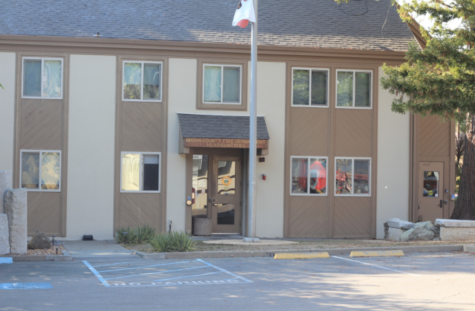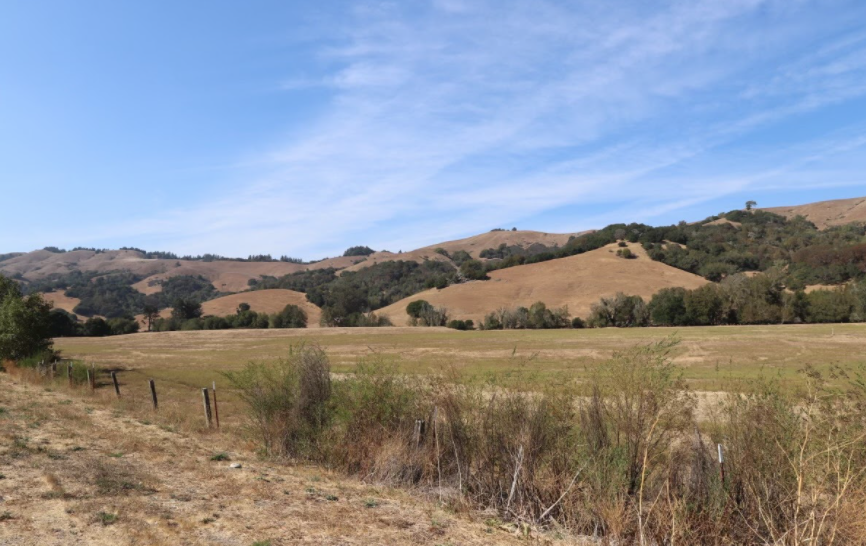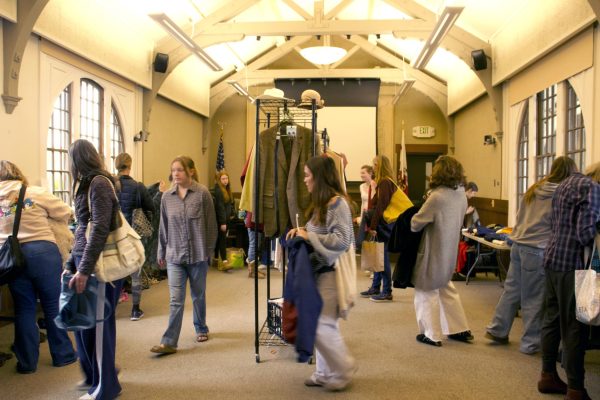San Geronimo Valley on high alert during fire season
An area of the San Geronimo Valley near Woodacre, made up of dry grassland and forests, which can be fuel for wildfires.
Due to successive dry winters, California’s fire season poses more risks than ever before. In 2020 alone, over 4 million acres burned in California, spanning roughly the size of Connecticut and Rhode Island combined. With ample fuel in the form of dry vegetation, the San Geronimo Valley is at high risk for wildfires, prompting people to take action to protect residents and wildlife.
For most of the San Geronimo Valley residents, their only escape route would be Sir Francis Drake Boulevard. As this road is a one-laned street, many people would struggle with traffic while trying to evacuate. Residents living in the high mountains would face an even more complicated evacuation process.

Additionally, the construction of many homes in the San Geronimo Valley took place before building codes were enforced in California in 1978, and have not been remodeled to fit these codes since. They don’t have the same features as newer houses that provide more protection from fires. San Geronimo Valley is surrounded by fuel for wildfires, including Douglas Fir forests, the coastal chaparral biome, oak trees, and grasslands.
“A lot of the vulnerability [in the San Geronimo Valley] is that there is a heavy concentration of fuel, and different types of fuel along the perimeter of the valley,” said Marin County Fire Department Captain Jordan Reeser.
As Reeser took a break in his hotel room during a grueling week battling the Caldor Fire in El Dorado County, he observed that wildfires burning out of control have increasingly become the norm.
“The fire behavior, the impact on the communities, has become much more commonplace throughout California,” Reeser said.
To stay safe during this fire season, according to Reeser, valley residents should trim any trees on their properties. They should also remove all dry or dead vegetation from their yards in order to reduce the amount of fuel for fires.
However, Reeser noted that not all fires are harmful to the environment. For instance, they clean the forest floor of dry underbrush and nurture the soil.
“The plant communities all through Marin have adapted, and many of them are dependent on fires for their regeneration, and regrowth, and overall health,” Reeser said.
Despite the risks of wildfires, certain precautions can be taken to hinder harmful wildfire activity. One organization of the valley, the San Geronimo Valley Emergency Readiness Group (VERG), works to ensure that members of the community stay safe during the fire season. VERG aids their community by providing a radio network to keep citizens of the valley informed in case of an emergency, and also holds classes on preparing for wildfire or earthquake crises.
Marlin Boisen, a member of VERG, is passionate about informing residents of the valley about how to prepare for the fire season. In his home, he keeps a grab-and-go bag, which is a backpack filled with all the supplies he might need if he is evacuated.
“You really can’t allow yourself to get terrified. It’s really important to try to maintain some kind of deliberateness and coolness,” Boisen said.
Though the fire season threatens the San Geronimo Valley, organizations are ready to help residents protect themselves and minimize wildfire dangers.

Mia is a senior, entering her fourth year in journalism. She loves writing and reading fantasy and playing violin. You can find Mia in the kitchen baking...







